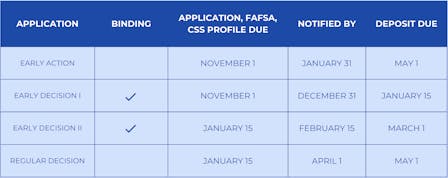American University will offer an early action application plan beginning in fall 2024, in addition to its regular decision, early decision I and early decision II options.
Most schools have one, two or sometimes three application plans. The University’s addition of early action, which now leaves applicants with four application options, allows AU to compete with peer institutions and provides more time to connect with applicants.
This new option is “essentially just an early regular decision,” said Jeremy Lowe, assistant vice provost of undergraduate admissions. The option allows prospective students to apply earlier and receive earlier notices without contractually committing to attend upon acceptance, as they must do when applying with early decision.
By offering early action, the University aims to both compete with peer schools — schools where students tend to apply alongside their applications to AU, like the University of Maryland, Fordham University, Pennsylvania State University, Northeastern University and others — which already offer early action and to give students and their families more time to consider an admissions offer, Lowe said.
The early action application follows an earlier timeline than regular decision, requiring students to submit their application by November 1. They must also submit their FAFSA and their CSS Profile, a financial aid form created by the College Board, by this date to be considered for financial aid.
Students will then be notified of their decision and financial aid offer by the end of January, about two months earlier than a regular decision offer. Early decision I admissions offers are announced by the end of December, and early decision II offers are released by mid-February.
Unlike early decision, an early action application does not necessarily indicate that the student is committing to AU as their top option. Lowe said early action applications likely won’t automatically be recognized as demonstrating interest the same way as early decision applications. He added that while the University still considers demonstrated interest, it isn’t as important in evaluating an applicant as it once was.

Offering early action offers another key benefit, Lowe said — giving applicants something they’re familiar with from other schools’ options.
“It makes sense that we try to remain competitive and provide to applicants something that they're already expecting in an early action plan,” he said. “And then for the student, the benefit is they have more time to consider an offer because they'll have those extra weeks — whether they want to make a visit to campus or, [if] affordability is really high on the radar, [it] gives them more time to consider the cost of college as they weigh their options.”
Lowe said the University’s Office of Enrollment had been tossing around the idea of adding an early action option for years, but started considering it more seriously last fall.
The University participated in a pilot program this year with the Common App which allowed it to look at aggregate data from peer schools. From that data, Lowe said AU noticed that these similar schools were receiving “an outstretched size of their applicant pool” that applied early action.
“For us to only offer regular decision and early decision, we've had a much smaller [early decision] pool, and then a huge regular decision pool,” Lowe said. “Offering early action, structurally, we'll space out our applications a little bit more and give our team a little bit more of a runway to review, which would be nice.”
To accommodate for the earlier application reading period, Lowe said the Office is advising admissions counselors to finish their fall on-the-road recruiting earlier to be ready for reading training in mid-October.
With AU facing a budget shortfall due to declining enrollment, both graduate and undergraduate admissions — which are handled by separate offices — are pushing to meet enrollment targets. And while undergraduate enrollment rose between the fall of 2022 and the fall of 2023, this year’s faulty and delayed FAFSA led to dramatic drops in enrollment across the nation. This included enrollment at AU, with the Board of Trustees’ May email reporting that deposits for enrollment were down 11 percent.
Still, Lowe said he doesn’t see early action as a “one-size-fits-all solution to the issue of the enrollment targets.” The main benefit, he said, won’t be that AU could see a bump in the total number of applications, but that the University will have more time to connect with families and accepted students before they have to make their decision.
“When you give families more time to plan and [when] we can kind of cultivate admitted students for a longer period of time, that'll serve us really well,” he said. “One of the things we do know is that when admitted students visit our campus, or they connect with us for admitted student events in their region, or they do virtual programming, the chances of them accepting our offer increase — it's a good thing.”
This article was edited by Olivia Wood, Tyler Davis and Abigail Turner. Copy editing done by Luna Jinks, Ella Rousseau and Ariana Kavoossi.





